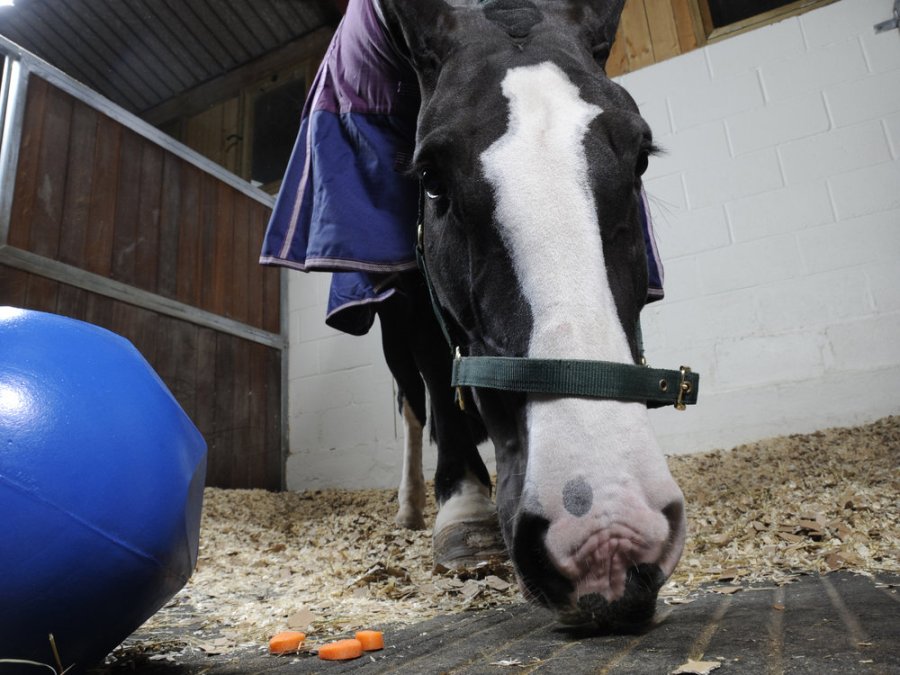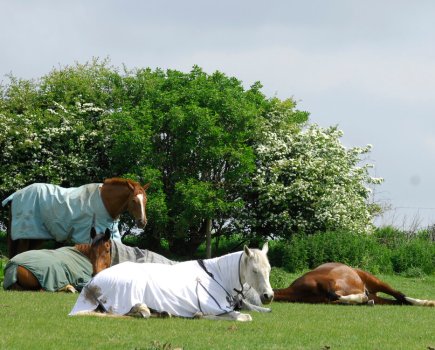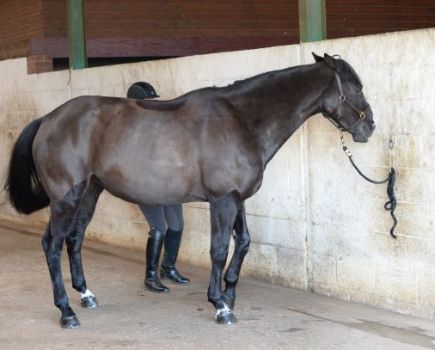Clinical animal behaviourist Debbie Busby discusses ways to enrich your horse’s stable environment and overhaul the way he’s kept.
Horses, like people, have a hierarchy of needs. This hierarchy takes the form of a pyramid, with the most important need at the base of the pyramid and higher-level needs at the top. Higher-level needs cannot be fully addressed until the fundamental needs have been met.
The equine hierarchy of needs has safety at its base. As a prey animal, safety is the horse’s most basic requirement and it’s the reason why horses have such highly developed reactions to threat and such strong affiliative needs – basically, there’s safety in numbers.
Horses need to live in a social group that is settled and constant, where they can see, smell, hear and touch one another. Individual horses also need to have a pair bond for mutual protection.
Simply stabling horses where they can see other horses is sometimes not enough to meet their needs. Two effective solutions to this problem are group housing and environmental enrichment.
Group housing
Group housing involves keeping horses in small groups loose inside a barn or a sheltered yard. They each need at least twice as much floor space as they would have in a single stable and must be able to get away from the other horses.
They need enough space to eat freely and lie down and roll, with unhindered access to hay and water. Group housing has many benefits, not least that horses are able to fully interact with each other, the area takes less time to muck out and it saves on bedding compared with individual stables.
It’s a very useful way of maintaining the social structure of a group of horses while still being able to bring them in at night, and many group housing systems offer open access to the outside so the horses have the choice of being in or out.
Environmental enrichment
If group housing is a non-starter, there are still many changes you can make to enrich your horse’s stable environment.
Environmental enrichment involves enhancing your horse’s living conditions and daily activities by enabling him to carry out all the behaviours he should.
- Scatter hay or haylage in piles on the floor to mimic natural ‘eating on the move’ behaviours.
- Scatter hard feed on top of roughage so it takes longer to eat.
- Hide carrots, swedes and apples in hay to encourage foraging.
- Hang suitable fruit and veg at different levels from stable beams.
- Add logs and branches to encourage browsing – check the BHS website for what to avoid.
- Fix textured mats to the stable wall to encourage self-grooming.
- Open the stable door and hook a rubber barrier across the doorway.
- Arrange partitions so that horses can see and touch. Try to put field friends and pair bonds next to each other.
Don’t miss the latest issue of Your Horse Magazine, jam-packed with training and veterinary advice, horse-care tips and the latest equestrian products available on shop shelves, on sale now.









